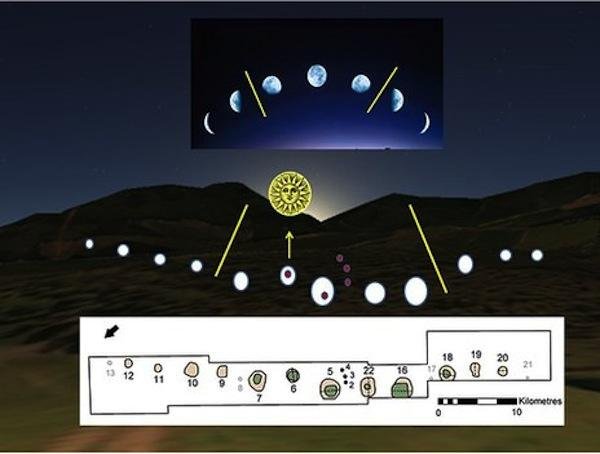The world's oldest lunar "calendar" was discovered in a field in Scotland, consisting of 12 pits which track phases of the moon, and make an annual midwinter adjustment for seasonal shifts. This illustration shows how the pits, created 10,000 years ago, would have worked. (Credit: University of Birmingham)
Archaeologists believe they have discovered the world's oldest "calendar" in a Scottish field. It preceded the earliest known calendar in Mesopotamia by 5,000 years.
A team led by the University of Birmingham excavated Warren Field at Crathes Castle and found 12 pits which appear to track the phases of the moon.
Experts say the pits also aligned on the Midwinter sunrise to provide an annual "astronomic correction," increasing the accuracy of seasonal measurements.
Birmingham Professor Vince Gaffney, who led the analysis project, said the find "illustrates one important step towards the formal construction of time and therefore history itself."
The Mesolithic "calendar" is about 10,000 years old, far older than previous known formal time-measuring monuments created in Mesopotamia.
"The evidence suggests that hunter-gatherer societies in Scotland had both the need and sophistication to track time across the years, to correct for seasonal drift of the lunar year and that this occurred nearly 5,000 years before the first formal calendars known in the Near East," Gaffney said.
Dr. Richard Bates, of the University of St. Andrews, also involved in the excavation, said the discovery "is the earliest example of such a structure, and there is no known comparable site in Britain or Europe for several thousands of years after the monument at Warren Field was constructed."
The Warren Field site was first discovered as unusual crop marks spotted from the air by the Royal Commission on the Ancient and Historical Monuments of Scotland (RCAHMS).
"It is remarkable to think that our aerial survey may have helped to find the place where time itself was invented," said Dave Cowley, aerial survey projects manager at RCAHMS.















